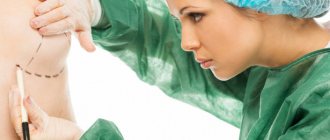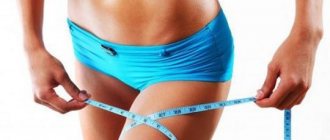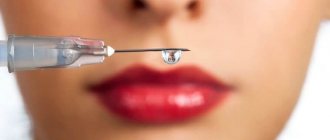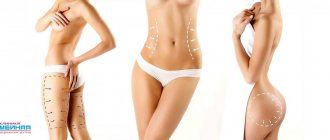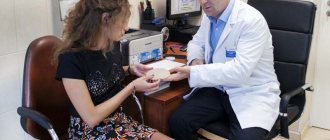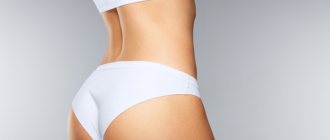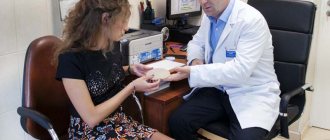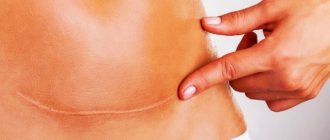- Indications and contraindications
- What tests need to be taken
- How is lipofilling of the buttocks performed?
- Possible complications
- Rehabilitation after buttock augmentation
- Buttock fat grafting or implants?
- Photos of completed work
Plastic surgery can offer several methods for correcting individual areas. Among them, one can note the augmentation of the buttocks with one’s own fat without the use of implants. This technology is called lipofilling and allows you to solve two problems at once. On the one hand, get rid of unwanted fat deposits, and on the other, give the buttocks a rounded shape and make them toned.
Liposuction With lipofilling of the buttocks 2 years after the operation The work of Dr. Amjad Al Youssef
A month after liposuction and lipofilling of the buttocks from Dr. Youssef Bassanovich
Indications and contraindications
The operation is indicated for men and women who have the following aesthetic defects:
- noticeable differences in the shape and size of the buttocks;
- unaesthetic appearance due to sudden loss of body weight, previous operations;
- “pits” in the central part of the buttocks, their drooping;
- scars due to which the skin retracts and changes in shape.
In addition to indications, the method also has contraindications. It will not be possible to perform buttock augmentation using your own fat if the patient has:
- severe cardiovascular diseases;
- pregnancy and lactation;
- long-term use of drugs that affect vascular tone;
- acute infectious diseases;
- oncological diseases;
- mental illness.
If there are other violations, the decision to carry out the operation is made individually.
FAQ
Features of rehabilitation
After surgery, patients are usually discharged on the 2nd day. Minor pain can be easily relieved with painkillers. For better recovery, it is important to limit the load on the gluteal muscles for a couple of months by refusing to train. Sitting should also be avoided. Wearing corrective underwear is recommended for the entire rehabilitation period. Until the wounds heal, you should also avoid visiting swimming pools, baths and saunas; in the first two months, it is better to avoid direct exposure to sunlight on the operated area.
When will it be possible to see the final result of the operation?
Due to tissue swelling and hematomas, it is impossible to evaluate the result in the first month. But gradually the swelling subsides, and the first result can be observed three to four weeks after the operation. The duration of the late recovery period can last up to six months, after which the final effect can be assessed.
What tests need to be taken
In order to determine the patient’s health status, identify contraindications and prepare for lipofilling of the buttocks, the surgeon prescribes a number of tests that must be taken in advance. This list includes:
- General blood and urine analysis.
- Coagulogram.
- Blood chemistry.
- Test for HIV, hepatitis, syphilis.
- ECG.
- Fluorography.
If necessary, the doctor can supplement this list with other tests, as well as prescribe a consultation with a specialist.
How is lipofilling of the buttocks performed?
After consulting a plastic surgeon, passing the necessary tests and preparation, the stage of the operation itself begins. Enlargement of the buttocks with your own fat involves three mandatory steps:
- First, the required volume of adipose tissue is taken from a pre-designated donor area using a special cannula. To do this, small punctures are made in the skin, after which no noticeable scars remain.
- At the next stage, the fat is prepared for transplantation. Using a centrifuge, the tissue is cleaned of blood impurities and destroyed, non-viable cells.
- Then, buttock augmentation is performed using your own fat. The surgeon again uses cannulas and makes small punctures in the skin.
After all manipulations, antiseptic treatment of wounds is performed, sterile bandages are applied, and, if necessary, compression garments are used.
Recommendations for patients during surgery: Body lipomodeling with buttock lipofilling
Recommendations for patients during surgery: Lipomodeling of the body with lipofilling of the buttocks (removal of adipose tissue with filling of the buttocks or breasts with fatty tissue) Abdominoplasty (removal of the skin-fat apron of the anterior abdominal wall) Lipomodeling with abdominoplasty (The operation can be performed in several stages, depending on the volume, each stage is paid separately)
These instructions must be read and followed carefully! In them you will find answers to the most common questions regarding pre- and post-operative preparation!
Before surgery:
- Patients must undergo an examination (for a list of tests, see the appendix that was sent additionally). Test results may be valid for 14 days. It is necessary to do an ultrasound of the mammary glands on days 6-11 of the cycle, if after the ultrasound there are indications for mammography, it must be done IN ADDITION to the list of tests.
- Consultation with specialists is mandatory for patients with chronic diseases, especially diseases of the cardiovascular system, respiratory diseases, including hypertension and asthma. These specialists must provide a conclusion stating that the operation is not contraindicated for you.
- Patients with diabetes should carefully monitor their glucose levels before and after surgery. If necessary, consult a specialist about the regimen for taking medications the night before surgery and on the day of surgery.
- If you are thought to be pregnant, the operation should be cancelled. Anastasia must be informed about pregnancy, and a confirmatory examination or hCG test must be sent.
- It is mandatory to take multivitamins, especially vitamins A, C and trace elements Ca, Mg, Zn, in a daily dose of 1 month. before and after surgery. Optivumen are good vitamins, you can use them or any other multivitamins.
- It is advisable to perform the operation in the first half of the menstrual cycle to reduce the risk of bleeding.
- Avoid all nicotine-containing drugs 1 month before and after surgery, including cigarettes, cigars, tobacco and patches. Nicotine disrupts tissue circulation and has a negative effect on the outcome of surgery. Statistically, smoking people increase the risk of surgical complications, especially the development of infections, delayed tissue healing, and the quality of scar formation deteriorates. Patients with severe nicotine addiction are recommended to take medications that relieve nicotine addiction. It is also necessary to take the drug Wobenzym.
- If you have an allergic reaction to medications or any other substances,
- BE SURE TO TELL ALL MEDICAL STAFF BEFORE SURGERY.
Two weeks before surgery:
- Do not take medications that contain aspirin, diclofenac, naproxen, nasal drops, fish oil, parsley, garlic, or vitamin E. Many pain relievers and medications used for colds and sinusitis contain aspirin. If you are using any drugs that cause bleeding [heparin, warfarin], tell your doctor immediately. Stop taking herbal supplements and dietary supplements 10 days before surgery.
- Vitamin C two weeks before surgery, 500 mg three times a day. Vitamin C promotes rapid tissue healing.
- Vikasol 1 tablet. 1 time per day for 2-3 days. before surgery.
- Dicynon 1 tablet. 3 times a day a week before surgery.
One week before surgery:
- Do not drink alcohol for 1 week before and after surgery.
- Please make sure that all laboratory tests/tests ordered by the doctor are ready by this time and all ORIGINALS are in your hands. Remember that you can get all tests done in our clinic.
- Consult an anesthesiologist in our clinic. You will undergo anesthesia. It is important that the anesthesiologist has a complete picture of the condition of your body so that the anesthesia goes smoothly. All tests must be taken during the consultation.
Three days before surgery:
Three days before lipomodeling with abdominoplasty surgery: It is necessary to exclude foods rich in fiber from the diet (fresh fruits and vegetables, herbs, cereals, legumes, mushrooms, berries, brown bread).
You can eat: broth, boiled meat, fish, chicken, cheese, white bread, butter, cookies. If you suffer from constipation, you need to take the laxatives you usually use every day. You can even slightly increase their dose. Have a light lunch 2 hours before taking DUPHALAC.
Dissolve 1 bottle of DUPHALAC in 2 liters of water, take 2 liters of Duphalac solution within 2 hours.
You should start taking DUPHALAC no earlier than 2 hours after a light lunch (broth, tea, juice). One bottle of DUPHALAC (200 ml); diluted in 2-2.5 liters of drinking water at room temperature (carbonated water cannot be used). The resulting solution is taken over 2-3 hours, in separate sips (to improve the taste, you can drink it with juice without pulp). After 1-3 hours you will have loose stools, bowel movements will be completed 2-3 hours after taking the last dose of DUPHALAC. Don't worry if you feel like your colon cleansing wasn't enough. When using the specified preparation regimen, there is no need to give enemas! If your surgery is in the morning, your last meal before surgery should be before bed no later than 10:00 pm. If your surgery is after lunch, there is no need to fast (especially if you have diabetes). A light breakfast (porridge, egg, bread, tea or coffee) will not interfere with the operation, but only; will improve your well-being and make it easier to undergo the operation. When using the drug on the day of surgery, there is also no need to do enemas!
The day before surgery:
- You will be additionally notified about the time of the operation and the time of arrival at the clinic. The operation may be delayed, since patients with long-term general anesthesia are the first in the plan, and it is not always possible to predict the exact time of the operation and its complexity. Situations are different, so please be understanding, the Doctor may also be delayed with you!
- No eating or drinking of any kind after midnight [including water and chewing gum]. Surgery may be delayed if these instructions are not followed. Fasting is necessary for anesthesia.
- If you need to take medications the day before surgery, please consult with your Anesthesiologist. If necessary, take medications with a small amount of water.
On the day of surgery:
- Take a shower and wash your hair with shampoo in the morning before surgery.
- Do not apply cosmetics, hairspray, hair gel, or deodorants.
- Don't wear nail polish! You can keep acrylic nails.
- Bring comfortable shoes and loose clothing. Avoid clothing that goes over your head. Bring something with a zipper or buttons.
- Do not wear jewelry or bring valuables with you to the operation.
- Come to the clinic at your appointed time.
- Do not eat 6 hours before surgery, do not drink liquids 4 hours before surgery.
! If you have not informed the surgeon or anesthesiologist about the presence of any chronic diseases, allergic reactions [including the presence of allergic reactions in close relatives], a tendency to keloid and hypertrophic scars, or taking medications, then please inform us about this no later than a week before surgery, in person at the clinic.
Postoperative Instructions
What to expect
- Pain in the surgical area. The pain intensifies on the 2nd day and decreases by the 5th day. The intensity of pain depends on the method and extent of the operation, the nature of the patient and pain threshold (different patients have different pain thresholds), and muscle tone.
- There may be temporary numbness and decreased sensitivity in the suture area and navel, which will resolve within a few weeks.
- Swelling, bruises. In the first few weeks after surgery, asymmetry of the mammary glands may occur due to swelling and bruising, which will resolve after these symptoms disappear. Please be patient! DO NOT REMOVE YOUR COMPRESSION WEARING! The maximum time without compression garments is 3-5 minutes to wash the operation area.
- Feeling of fullness and heaviness for 10-14 days.
- Discomfort or sore throat after intubation.
- Low temperature is possible: 37-37.5 degrees Celsius during the first days. If the temperature rises to 38C, measure the temperature under the knee and take an ibuprofer tablet at night.
- The feeling of tingling and discomfort may appear on only one side or both. Usually these symptoms disappear by 3-4 months.
- In the area of sutures and drainages, a small amount of ichor (red liquid) may be released during the first week and soak the bandages and underwear. Report any discomfort to your doctor.
- If you are a nonresident patient, you need to stay in the city for 10-14 days after the operation, perhaps more, perhaps less. The doctor decides when you can go home. You can't leave the city!!!
Pain, swelling, bruising and infection.
- The intensity of pain after surgery is individual for everyone: from minor to severe. For pain relief, use ketorol, ketonal up to 4 tablets. per day Taking aspirin is strictly contraindicated. At first you may experience a feeling of discomfort, which will soon pass.
- To relieve the inflammatory process (any injury is inflammation), take 1 tablet of ibuprofen. 2 times a day for 5-7 days.
- Bruising and swelling are common. To quickly get rid of bruises, you can use Lyoton, Arnica gel, and Rescuer cream, which are applied several times a day. After 1 week After surgery, wet, warm wipes can be applied to the bruised area. Bruises and bruises gradually disappear within 2-3 weeks.
- To reduce swelling: Diuver 1 tablet. in the morning for 1 week. Lymphomyosot 20 drops in 100 ml of water 3 times a day for two to three months. Compresses with dimexide, first dissolving it in water 1:4 (1 part dimexide and 4 parts water).
- Laser magnetic therapy, infrared rays, and ultrasound help to quickly get rid of bruises, swelling and speed up the healing process. Please do not neglect physical therapy!!!
- Antibiotics are prescribed to prevent infection. Sumamed 500 mg 1 tablet. 1 time per day for 3 days (antibiotics may be changed upon discharge depending on the case and tolerability). In most cases, infection is very rare. Temperature, redness, swelling and tissue tension indicate infection. You should contact your doctor immediately to prescribe appropriate treatment.
- A course of probiotics to prevent dysbiosis. Linux - according to the scheme. At first, bloating is possible - it occurs due to the intraoperative administration of muscle relaxants and goes away by the end of the week.
- The final results are assessed after 6-8 months.
- More detailed recommendations will be given upon discharge. It is very important to follow all doctor's recommendations and undergo physical therapy. Thanks to physical therapy, your rehabilitation will be faster.
Special Instructions
- The first dressing is performed the next morning after surgery. Sterile dressings and drains will be placed over the incision area. The drains will be removed on the first day after the operation (it happens that the drains are left for 1-4 days), in some cases, for several days. ALL FUTURE DRESSINGS WILL NEED TO BE REGISTERED AT THE REGISTRATION RECEPTION. The doctor himself will tell you when to come next time, everything is individual.
- After surgery, you can massage using gentle circular movements while avoiding the incision line for 2 weeks. Get a massage daily or see a massage therapist. This will help relieve pain, increase lymph circulation and nourish the skin.
- After the operation, it is necessary to wear special supportive compression garments. Keep your underwear on for 4-6 weeks after surgery, except when you take a 4-5 minute shower. Proper underwear is a key point in the postoperative period. Specialized underwear increases the patient's comfort level, promotes faster recovery, positions tissues in the correct position and promotes long-term satisfactory results. A regular bra or any tight clothing should not be worn for three months after surgery until the tissue has fully recovered.
Compression garments should apply pressure at first, as severe swelling is observed in the early stages. The underwear has been selected correctly for you, be patient, the discomfort will go away soon. If the laundry rubs, you can place soft rag napkins in the friction zone.
The importance of wearing special compression garments:
- Recovery – wearing compression garments during the postoperative period reduces swelling, improves blood circulation and helps remove stagnant fluid from the operated area, controls the inflammatory process.
- Comfort – will help minimize discomfort and pain.
- Compression garments prevent back and shoulder pain.
You can return to wearing regular underwear 4-6 weeks after surgery.
Until the restoration process is completely completed (six months to a year).
In some cases, numbness around the incisions can last up to several months after plastic surgery. In this case, patients do not feel any pain, even if dense and pressing tissues literally cut into their skin.
It is important to prevent pressure and rubbing on the scar area after surgery.
If irritation, pain, or redness occurs around the scars, patients should inform their surgeon immediately. Such moments are often a symptom of infection or other complications.
Even if the incisions have healed, they may still be irritated by the synthetic fabrics commonly used in most clothing, so for everyday wear it is best to choose clothing that is pressure-free and has tight elastics.
Caring for seams
- Your primary dressing is carried out on the first day after the operation by the main and assisting surgeons, then for the first month you are observed by the assisting surgeon, to the Operating Surgeon - only if something is very bothering you and for 14 days after the operation MANDATORY. Next, you will need to sign up for all profs yourself, through the Registrar. Examinations: 1,3,6,12 months after surgery. NECESSARILY!!!
- Ice packs, cold gel masks, napkins soaked in cold water, or bags filled with frozen green peas and corn should be used in the first 48-72 hours. after surgery to reduce swelling and bruising. Cold is applied for 20 minutes. at intervals of 40 minutes. 2-3 times a day. After 3 days, cold is applied, if possible, several times a day until the swelling decreases. Ice is placed on a napkin; never apply ice directly to the skin.
- For the first two to three weeks, the seams are sealed with Micropore adhesive plaster. Then an ointment is applied (flamena, hydrocortisone ointment, imoferase). Then, within 3-4 months. A silicone-based adhesive plaster (Dermatix, Contractubex, Mederma) is glued to the seam area.
- Oxygen therapy, if desired, is prescribed from the first day after surgery. It promotes rapid healing and relief of swelling.
- Laser magnetic therapy is recommended from 2 days after surgery; it also promotes rapid healing and the removal of swelling. Electrophoresis with lidase, ronidase, collalysine or phonophoresis with 0.5% hydrocortisone emulsion.
- The Vbeam Perfecta laser is also indicated for eliminating scar redness starting from 10-14 days.
- PRP therapy starting from 14 days. accelerates healing, promotes proper scar formation, and eliminates the feeling of “suture tightness.”
- Scar resurfacing with CO2 laser starting from 21 days after surgery. It is also used to improve skin quality.
- Pressotherapy helps relieve swelling from the entire body starting 3 days after surgery.
General instructions after surgery:
- You must make advance arrangements for transportation to the clinic on the day of surgery and on the day of discharge. It is PROHIBITED to use personal and public transport within 24 hours after the operation! You will be under the influence of anesthetic and pain medications. You cannot drive a car for 10 days after surgery.
- If you plan to perform several operations at the same time, you may need the help of an assistant in the first two to three days.
- Smoking is strictly prohibited for 3 weeks, preferably up to 1 month. Nicotine disrupts tissue circulation and has a negative effect on the outcome of surgery. Statistically, in people who smoke, the risk of surgical complications increases, especially the development of infections, delayed healing, and the quality of scar formation deteriorates.
- Take all prescribed medications strictly, especially painkillers. Don't wait until your pain gets worse, as the pain can lead to increased blood pressure and subsequent bleeding. You can take ketorol, ketonal, OKI, nise.
- Avoid direct sunlight and tanning beds for 1 year after surgery. Even minor exposure to sunlight can lead to irritation, pigmentation and increase the duration of swelling.
- It is recommended to sleep on your back (with abdominoplasty) or on your stomach if you have undergone lipomodeling surgery with lipofilling of the buttocks for 1 month. You can turn on your side and sleep on your side 3 weeks after surgery.
- Do not take medications containing aspirin [Advil, Motrin], diclofenac, naproxen, nasal drops, fish oil, parsley, garlic and vitamin E for 2 weeks. after operation. Many pain relievers and medications used for colds and sinusitis contain aspirin.
- Do not compare your results with the results of other patients (friends, sisters, acquaintances). Remember that the healing process is individual for each patient. If you have any concerns or questions, please write to us. Family and friends can give you advice, but remember it may not be TRUE! The most important opinion is the opinion of a doctor who knows how it should be!
- Please keep your emotions under control. In the first days after surgery, patients may experience mild depression and fatigue, which quickly passes when the patient begins to feel well.
- You will be able to see your final result in 6-12 months.
Activity
- In the first week after surgery, sharply limit your activity. If possible, we recommend taking 10-14 days off.
- You are allowed to walk with the help of an assistant for short distances on the first day after surgery, to prevent deep vein thrombosis, with a gradual increase in the distance in the following days. Move your legs as often as possible when lying down [essential to prevent deep vein thrombosis and prevent constipation]. Wear elastic stockings for 5 days after surgery.
- Do deep breathing movements (breathing exercises) or use a spirometer every hour you are awake for 5 days. This is especially important within 24 hours after surgery. This will help straighten the lungs, prevent postoperative pneumonia and pulmonary atelectasis.
- Avoid strenuous work, especially upper body exercises and sports, for 6-8 weeks. after operation. You cannot: vacuum cleaner, play tennis, run, lift weights, do exercises for the upper shoulder girdle, swim. You can't even lift a child!
- You can return to lower body sports after 3-4 weeks. after operation. Start with light exercises, gradually increasing the load to your usual level by 5-6 weeks.
Taking baths:
In the first days, it is recommended to rub down or take a light shower. At the same time, keep your back turned to the water, trying to keep the bandages completely dry. On the 3rd day after surgery, you can take a full shower. If the sterile strips become wet, do not remove them. You can dry them gently with a dry towel or use a warm hair dryer (not hot and on low power) to dry the sterile strips.
Meal:
After surgery, you definitely need to eat, as the body is weakened and requires nutrition! No fasting days!!! Even if you don’t want to eat, you still need to do it as much as you can, little by little!
- Drinking alcohol and coffee is prohibited for 1 week. after surgery, as this increases blood pressure and bleeding.
- Drink plenty of water and juices after surgery, as dehydration may cause nausea.
- Food should be light and balanced. Avoid foods that require thorough chewing.
- To prevent nausea, you need to eat food 20 minutes before. before taking medications [painkillers, antibiotics].
- If you experience vomiting or nausea, it is better to refrain from eating and taking medications until the symptoms stop. It is recommended to drink 50-100 ml of water. hourly until nausea stops. If nausea persists, take antiemetics [Dramamine] as vomiting may have adverse effects.
- It is recommended to take vitamin C 1000 mg per day for 2 weeks. after operation. Vitamin C promotes collagen production and the resolution of bruises.
- Eat foods rich in vitamin K [green leafy vegetables and salads, broccoli, seaweed]. Vitamin K promotes rapid resorption of bruises.
- Include light soups, applesauce, juices, yogurt, cottage cheese, oatmeal, and jelly in your menu. Food should contain enough protein - the body needs it for speedy recovery. Reduce the amount of salt in your food so as not to increase post-operative swelling.
- It is important to increase iron levels after surgery, since hemoglobin decreases after any operation. Eat white and red meat, liver, lots of greens, pomegranates, apples. Increasing hemoglobin levels will speed up healing.
List of medications and products needed in the postoperative period:
You can buy it in advance, or after the operation. Perhaps your doctor will not prescribe something from this list for you.
- Antibiotics sumamed 500 mg, 1 tablet. 1 time per day for 3 days.
- Painkillers: ketorol, ketonal, OKI, nise, for pain. Painkillers may cause constipation. In this case, it is recommended to take laxatives (Duphalac).
- Bifidobacteria for the prevention of dysbacteriosis (Linex).
- Vitamin C 500 mg per day for 5 days.
- Diver 1 tablet. in the morning for 1 week. Lymphomyosot 20 drops. in 100 ml. water 3 times a day for two to three months.
- Iron preparations for oral administration.
Procedures indicated in the postoperative period:
This is a very important stage, physiotherapy is recommended for everyone! We have our own rehabilitation center, where specialists know how to properly carry out procedures after such an operation. If you choose to see your own specialists, we cannot be held responsible for the results.
- Oxygen therapy from the first day after surgery.
- Laser magnetic therapy.
- Ultrasound, microcurrent and infrared therapy.
- Electrophoresis with lidase, ronidase, collalizine or phonophoresis with 0.5% hydrocortisone emulsion on the area of the sutures after their removal.
- Pressotherapy and lymphatic drainage massage.
You need to urgently write to the doctor if:
- There is a temperature of 38 and above.
- When the pain is not relieved by painkillers.
- If the suture area is swollen, red and bloody or any discharge appears.
- Persistent nausea and vomiting.
- Other concerns and questions.
Your surgery will be performed with the utmost safety and diligence to achieve the best possible results.
POSSIBLE COMPLICATIONS:
We consider it our responsibility to inform you that with any surgical procedure there is a risk of undesirable results. Each patient has differences in skin structure, tissue structure, blood supply, as well as healing processes and response to anesthetic drugs. In this regard, it is impossible to give a 100% guarantee. The following complications have been published in the medical literature. They are listed here for your information. These consequences will also be discussed during the consultation. Our clinic uses only high-quality drugs, the most advanced technologies and equipment.
- Accumulation of fluid in the liposuction area or tissue detachment. As a rule, this problem can be solved quickly and relatively painlessly by suctioning out the liquid with a syringe.
- Reduced skin sensitivity, which in the vast majority of cases returns completely after 2-3 months.
- The appearance of hematomas as a result of tissue suppuration. Typically, such an undesirable phenomenon occurs when the patient violates the doctor’s recommendations in the postoperative period. Treated with antibiotics and daily dressings.
- Formation of keloid scars. This process directly depends on the individual characteristics of the tissues, therefore, after preliminary research, the plastic surgeon must warn the patient about the possibility of this phenomenon.
Any additional operations, if necessary, are paid by the patient for consumables.
Possible complications
The operation is low-traumatic and is performed without extensive incisions and blood loss. For these reasons, lipofilling of the buttocks rarely leads to the development of severe complications. After surgery, hematomas, tissue swelling, moderate pain, and slight loss of sensitivity may be observed. These conditions are temporary and do not require emergency medical attention.
Vaser liposuction with lipofilling of the buttocks from Dr. Anna Petrovna Pershukova
Weiser liposuction with lipofilling of the buttocks by Dr. Amjad Al Youssef
Weiser liposuction with lipofilling of the buttocks from Dr. Youssef Bassanovich Dergam
Rehabilitation after lipofilling of the buttocks examination by Youssef Bassanovich Dergam
Advantages of lipofilling of the buttocks at the Swiss University Clinic
- An individual approach to each patient is our rule; for each person a set of procedures is selected individually, taking into account the characteristics of the body and concomitant diseases.
- Our clinic employs a team of professionals - plastic surgeons with many years of experience, each of them has performed more than 600 plastic surgeries per year.
- SwissClinic is equipped with modern high-tech equipment that allows performing operations of any type of complexity.
- We have our own rehabilitation department and intensive care units equipped with highly sensitive equipment; Each patient after surgery is monitored by experienced staff.
- In our clinic, located in Moscow, lipofilling of the buttocks can be performed in combination with other types of plastic surgery: abdominoplasty, blepharoplasty, correction of shoulders, legs, etc. Also in our clinic, simultaneous operations are performed: elimination of 2-5 pathologies requiring surgical treatment, during one anesthesia. Any combination is possible with us!
Rehabilitation after buttock augmentation using your own fat
In order to get the desired result and maintain it for a long time, it is necessary to take a responsible approach to the recovery period. It means refusing to visit the bathhouse, sauna, solarium, or swimming pool. Particular attention should be paid to lifestyle (give up bad habits, eat right, maintain physical activity). If, after enlarging the buttocks with your own fat, you need to wear compression garments, then the schedule for its use must be strictly followed. The list of recommendations is compiled by the doctor for each patient individually and must be strictly followed.
In addition, about half of all transplanted fat cells may not take root in the new location. Therefore, in some cases, the operation is performed in 2-3 stages.
The operation is performed by plastic surgeons who are proficient in modern methods and use professional equipment.
In addition to lipofilling, plastic surgery offers buttock augmentation using the traditional method - endoprosthetics. During surgery, implants of the desired shape and size are placed under the gluteus maximus muscle through incisions in the skin. The buttocks gain volume and beautiful contours, and the results last a lifetime.
Rehabilitation period
Immediately after lipomodeling of the buttocks, the patient is put on special shaping underwear and wears it during the day for several weeks. The patient is discharged the next day after surgery. In the first few days after surgery, you may experience a feeling of tension in the skin at the operation site due to postoperative swelling. For 2-3 days, moderate pain is felt in the area of the operation, which is calmed down by taking medications. The swelling subsides within a week. Within a week you can return to normal life and go to work, avoiding heavy loads.
Buttock fat grafting or implants?
Along with the advantages, endoprosthetics also has disadvantages. If the implant is chosen incorrectly, the figure will look unnatural. After the operation, a long rehabilitation period will be required, and scars may remain. The risk of rupture and rejection of implants is minimal, but it still exists.
Fat tissue transplantation is a safer method because it does not require incisions or implantation of a foreign body. In addition, it solves two problems at once: removing fat in problem areas and replenishing volume in other areas.
Indications
Women often decide to undergo butt enlargement surgery, although it can be performed on both sexes.
The manipulation is cosmetic in nature, helps to get rid of imperfections, gain psychological comfort and accept your body. Typically, correction is resorted to in the following cases:
- congenital anatomical features (insufficient volume of soft tissue in the hips and buttocks);
- consequences of hormonal imbalances with redistribution of subcutaneous deposits;
- age-related deformation;
- consequences of various injuries.
Despite the fairly wide list of indications, the most common reason for plastic surgery is the desire to improve parameters, the so-called beautification.
